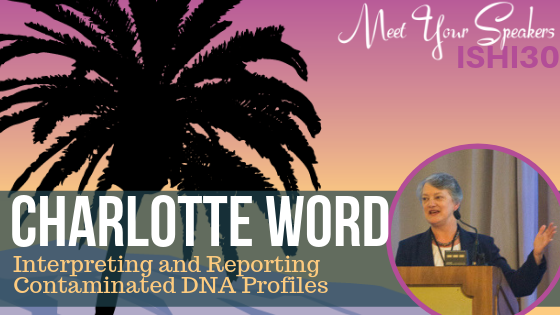In the early days of DNA profiling, Restriction Fragment Length Polymorphism (RFLP) testing required a relatively large amount of DNA for the development of a DNA profile, and the bloodstain left behind was still visible or detectable using presumptive testing. By the late 1990s, Polymerase Chain Reaction (PCR) testing had replaced RFLP, and the amount of DNA required to develop a profile was greatly reduced. As the years have progressed and sensitivity has increased, the amount of DNA required to develop a profile has been reduced even further to just a few skin cells.
While these advances have helped to solve numerous cases, it has also introduced the issue of contamination to forensic laboratories. The Quality Assurance Standards for Forensic DNA Testing Laboratories states that, “A laboratory shall have and follow a documented policy for detecting and controlling contamination,” but sometimes it’s not possible to identify the source of the contamination, and DNA profiles affected by the presence of contaminating DNA may be interpreted.
Charlotte Word will be leading a workshop entitled Interpreting and Reporting Contaminated DNA Profiles on Monday, September 23rd at ISHI 30. In this workshop, attendees will:
- Learn more about the sources of and steps to mitigate contamination
- Work through a root cause analysis and corrective action plans for a contamination event
- Get hands on experience interpreting and reporting profiles affected by contamination events
- Gain a better understanding of legal issues resulting from contamination
In order to learn more about the prevalence of contamination in DNA laboratories, we interviewed Charlotte to discuss common sources of contamination, steps to take to minimize contamination, and what she recommends labs do if they find a contaminated profile.
Charlotte, thank you for sitting down with us today! How common is the problem of contamination in DNA testing laboratories? Does virtually every lab experience contamination?
It would be rare for a laboratory to not experience some level of contamination at some point. It is impossible to eliminate all contamination; however, having knowledge of potential problem areas and use of appropriate safeguards and good evidence handling procedures can help decrease the risk.
What are the most common sources of contamination?
- From individuals handling the evidence at any stage of collection through testing
- Transfer from one sample to another during evidence handling or sample testing
- Using consumables that are not free of DNA
What are steps that every lab should take to minimize the chances of contamination?
These are too numerous to list here but include ALL procedures for proper evidence handling by ALL individuals during ALL stages of the collection, packaging, screening and testing of the evidence, and using all safeguards in the laboratory during testing. Extreme care is critical regarding the use of gloves and frequent changing of gloves when handling evidence as well as being sure not to talk over the evidence at any time.
Do you recommend that laboratories establish a database of all employee’s DNA profiles to be used in the case of contamination?
Yes. This has been very helpful in many cases sorting out that the “unknown” DNA contributor was actually someone in the chain of custody of the evidence, an individual who was present at the crime scene or someone who worked in the same area where the evidence was being tested. Detecting contamination from a known individual can eliminate that DNA profile from being entered into CODIS.
Are there legal or ethical issues to be considered when establishing an employee database? How can these issues be addressed?
Not detecting a contaminating profile may lead to the profile of an employee being inappropriately entered into CODIS. This may result in law enforcement waiting for a hit to the perpetrator that will never come and/or not following up on a suspect who may be involved in the crime due to an “exclusion” of the individual from the contaminant profile. If the contamination is detected, the appropriate profile from the perpetrator of the crime may be entered into CODIS and be available for comparison.
If a DNA profile is affected by contamination, can it still be interpreted? Or should it be discarded?
The profile can be interpreted using the same interpretation methods used for single source and mixed DNA samples in the laboratory and compared to the profiles of known individuals as is routinely done in the laboratory. Mixed DNA profiles may be resolved using standard practices and assumptions of contributors in many cases.
Who will benefit from attending?
- Anyone interested in knowing more about contamination and the interpretation of contaminated evidence and its impact on the criminal justice system.
- Essentially anyone who handles or works around evidence or is involved in the use of the DNA results and conclusions derived from evidence would likely benefit.
- This would include analysts (DNA and anyone who handles evidence), QA/QC managers and personnel, auditors/inspectors, crime laboratory directors and section managers, attorneys, judges, consultants, academics.
WOULD YOU LIKE TO SEE MORE ARTICLES LIKE THIS? SUBSCRIBE TO THE ISHI BLOG BELOW!
SUBSCRIBE NOW!


